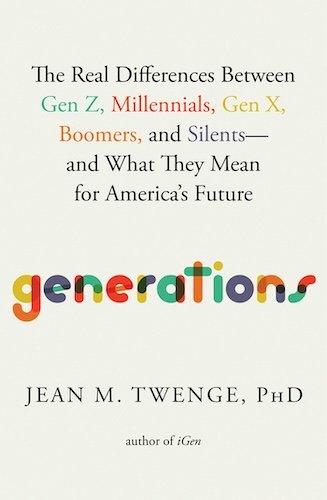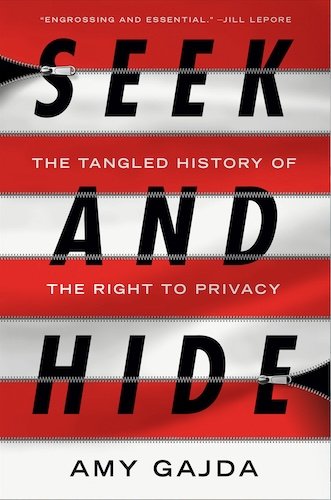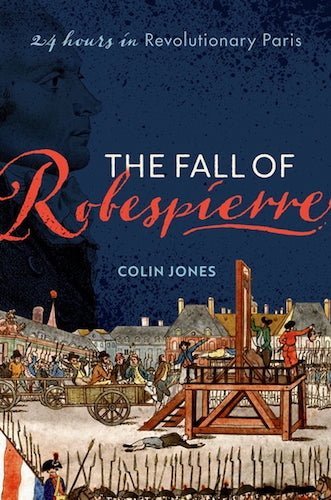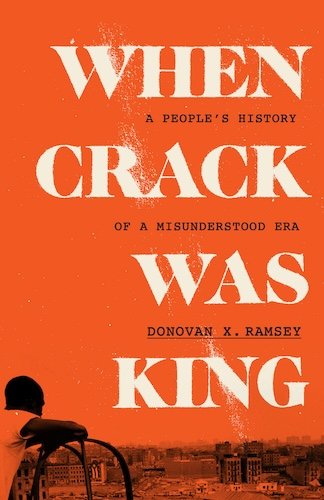Here are the top 10 nonfiction books I read in 2023 and 3 things that each of them taught me.
★★★★★ An Immense World by Ed Yong
An organism’s umwelt (pronounced “um-velt”) is a description of what they can perceive. Many organisms have such different umwelt that they are essentially existing in different universes without any perception of one another.
It makes no sense to make statements like “a dog’s nose is 10,000x as sensitive as a humans.” Dogs almost certainly perceive the world in radically different ways unrelated to the number of nerve endings in their olfactory bulbs.
Humans only perceive a very narrow range of possible sensory signals. To take a single example, elephants can communicate with one another using subsonic frequencies that are imperceptible to us. In a very real sense, the world is fundamentally different depending on your species.
★★★★★ Chip War by Chris Miller
Only 3 companies in the world are capable of physically manufacturing the most advanced computer chips that power everything from laptop computers to cell phones: TSMC (Taiwanese Semiconductor Manufacturing Corporation), Samsung, and Intel.
Only 1 company in the world is capable of creating the specialized ultra-UV lithography machines that these three chip fabs require: ASML. It’s lithography machines cost $300-400M each. It takes 13 containers and 250 crates to ship a single machine.
Because chip fabrication facilities are so mind-bogglingly expensive to build and run, many companies known for their electronics design (Apple, Nvidia, et al) don’t physically manufacture their own chips. They design chips which are then fabricated by TSMC, Samsung, or Intel.
★★★★★ The School of Life: An Emotional Education
This book defies the pattern of science-y nonfiction. It’s not, in my opinion, especially useful to summarize in bullet form. You’ll have to just check it out and see if you agree with the points.
★★★★★ Generations by Jean M. Twenge
I used to think that generations were a bit like astrology: make-believe concepts that people used to justify pre-existing biases. After reading this book, I realize that view is probably too extreme. There are real differences between differently-aged people. Whether you’re comfortable lumping them together using birth years or not doesn’t have anything to do with large and observable differences in the way those people think and act. So by all means go ahead and disagree with whether “millennials” start in 1979 or 1982, but people born around that time have significantly different life trajectories to people born in the late 1950s.
Younger people’s (Gen Z) mental health started to decline dramatically starting in 2012. A broad consensus is forming that the cause of that decline is due to cell phone use and social networking in particular. The impact has most heavily impacted young women.
The falling birth rate in developed nations is probably being driven by increasingly capable technology, wealth, and social acceptance of individualistic behaviors. The alarmist rhetoric about people not having babies because of climate change or overpopulation don’t hold up under research scrutiny. Most people that don’t have children do it for the obvious reason: children are insanely expensive and inconvenient. In the past, more communal societies distributed the cost of raising kids at the same time that it put pressure on individuals to have families to adhere to social norms. As societies have become more individualistic, the cost of raising kids has skyrocketed for parents at the same time as society has punished adults less and less for choosing not to have kids in the first place. Hence, fewer babies.
★★★★★ Seek and Hide by Amy Gajda
The right to privacy has been a part of English common law in some form or other for hundreds of years. Americans imported it into the original 13 colonies, but enforcement has always been inconsistent.
At the end of the day, the main battles in privacy law enforcement have centered around relatively powerful people attempting to obscure their deeds from the public. US society has gone through periods where it was deemed more and less acceptable to muckrake and expose those secrets. During the late 1790s, for instance, journalists and muckrakers had a largely free hand to malign politicians and businesspeople. During the early and mid-20th century, by contrast, the right of privacy was more strictly enforced and courts ruled more in favor of protecting individual’s private details.
We are currently in what Gadja thinks is the end of a period of particularly lopsided privacy enforcement that protects journalists and internet platforms.
★★★★★ Immune by Philipp Dettmer
The immune system is so dangerous to the body’s tissue that there are an almost mind-boggling number of steps, checks, and safeguards on it’s activation. So, if you ever see a medication that promises to “increase immune response” be skeptical: you don’t want an over-active immune system.
The body keeps a chemical memory of every pathogen it has ever encountered. That “memory” can be activated days, months, or years after first encounter. It also means that if you think of our immune system as a library of sorts, it is one of the most impressive information storage systems.
When your tissue is infected, it becomes warm to the touch. This is a localized version of having a high temperature during a bout with the flu. Scientists currently hypothesize that the added heat does help a bit to kill off pathogenic invaders, but mostly, it’s to facilitate easier and faster protein synthesis for the immune system. Basically, we get warmer when we’re fighting off a bacterium or virus because the immune system can more efficiently create warrior cells at slightly higher temperatures.
★★★★★ The Fall of Robespierre by Colin Jones
Robespierre’s contemporary oratory and rhetoric sounds unnervingly similar to modern populist leaders.
As with most tyrants, Robespierre held onto power through the use of violence and scare tactics. But this was also his undoing. The primary reason he was removed from power wasn’t due to a widespread popular backlash against his methods, it was because other powerful members of the revolutionary government were concerned that he might kill them.
There were many unlikely events that led to Robespierre’s removal and execution. If any one of them had ended differently, there’s a pretty good chance he would have survived and continued running the revolutionary government. In one particularly comedic situation, overwhelming military strength was arrayed against Robespierre’s enemies and it looked like the entire rebellion was over. But the leader of the that military detachment misunderstood how many guards there were in a government building. Fearing a clash with a non-existent enemy and fearing for his own title and office, he chose instead to retreat.
★★★★★ Good Economics for Hard Times by Abhijit V. Banerjee and Esther Duflo
International trade benefits developing nations far more than it benefits the US. The authors estimate that if all international US trade were halted tomorrow, it would only cost American consumers about 2.5% more per year to source all goods and services domestically. This isn’t a good argument to cease international trade, though. Hundreds of millions of people worldwide have better lives due to trade with the US. It is, however, an important fact to keep in mind when creating policy.
One of the primary hypotheses the authors put forward to explain rising income and wealth inequality in the US is a lack of a social safety net. While it seems like an obviously good idea on the surface for recently-laid-off workers in Cleveland to move to San Francisco to take advantage of more plentiful and highly-paid work, most can’t afford to do that. That’s not to say that they are modern day Okies fleeing the dustbowl with no money for gasoline. But expensive housing, a lack of subsidized childcare, and inaccessible health benefits make most disenfranchised workers rationally conclude that it’s better to remain in a place where they have social ties, even if there is no gainful employment. This perpetuates economic inequality. The laid off workers get poorer in small rural towns while coastal knowledge workers get richer in big cities.
In response to growing automation and AI-fueled job destruction, we could significantly increase social stability by offering displaced workers government-subsidized jobs doing work that robots can’t do such as in-person teaching, caring for children, or producing certain kinds of art. The way to identify these heavily-impacted people, however, will be difficult and contentious.
★★★★☆ Entangled Life by Merlin Sheldrake
Most fungi are not visible to us humans. Mushrooms are only the fruiting part of most fungi plants, and not every fungi species distributes it’s reproductive material via the air. The overwhelming mass of fungi on earth are contained in rocks and topsoil.
The whole premise of the video game and TV show The Last of Us is way less far-fetched at a scientific level than I had expected. Seriously, it’s a bit terrifying how advanced and pervasive fungi are and how little we can do to control them.
The root systems of most plants offload the production of necessary chemical symbiotic fungi species. That means that most trees and plant species would be incapable of existing on the planet without fungi.
★★★★☆ When Crack was King by Donovan X. Ramsey
Crack babies don’t exist. Or rather, the impact of crack on pregnancy outcomes was massively over-stated during the late 1980s and early 1990s to fit with a racist narrative of inner city black women and their lifestyle choices.
There is actually fairly solid evidence that the US federal government colluded with large, known cocaine traffickers during the 1980s as part of the Iran-Contra affair. While there isn’t a direct link between entities like the CIA and cocaine distribution in inner-city neighborhoods, the conspiracy theory about the US government using cocaine to control black communities isn’t as misplaced as I had assumed.
The end of the crack epidemic appears to have largely been driven by young people witnessing the ravages of the drug on their communities and abstaining. Ramsey even suggests that influential hip hop artists like Dr. Dre may have intentionally glorified the use of less destructive drugs like marijuana to discourage kids from using cocaine, crack, and heroine.









